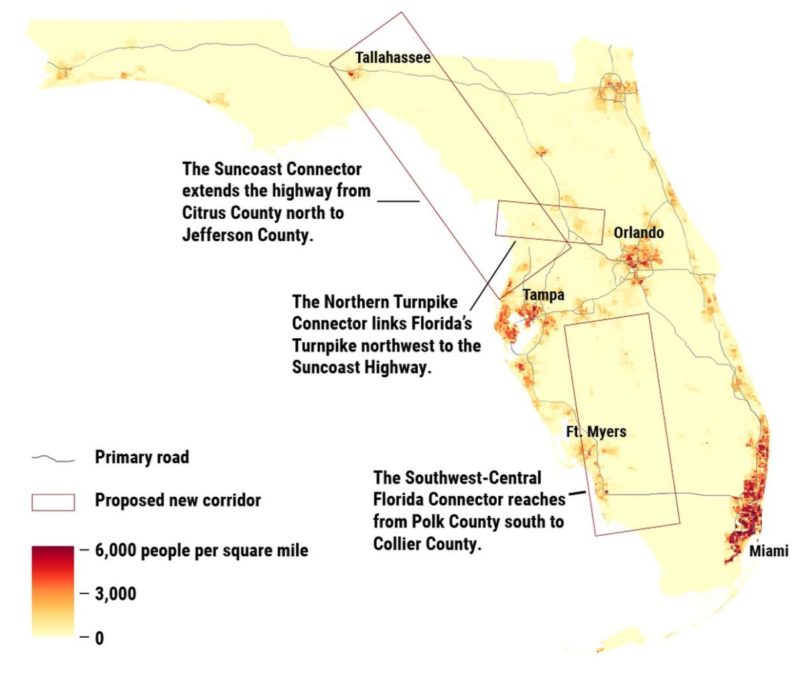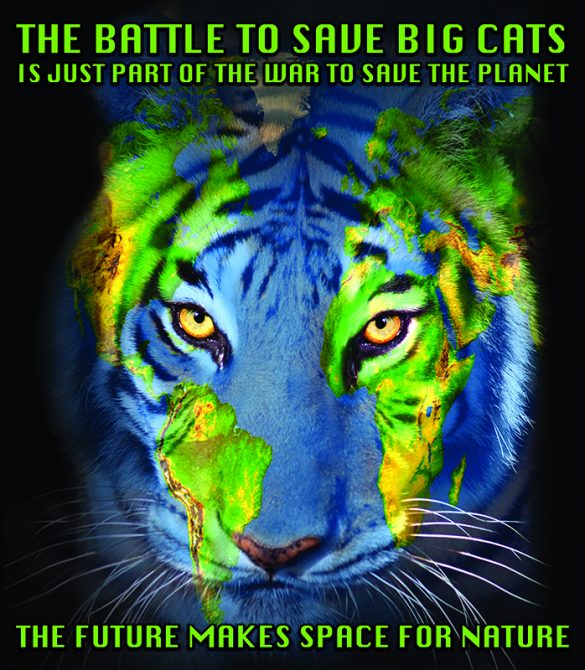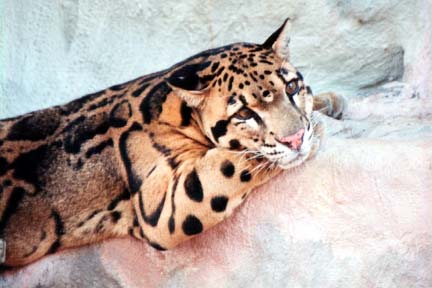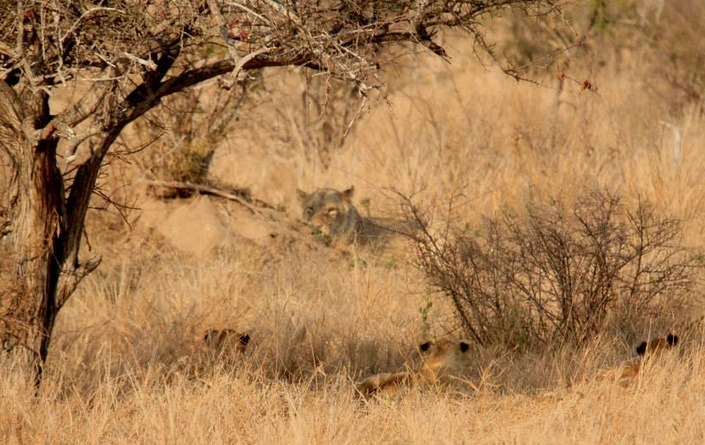Catfight

Working together to protect Florida’s panther.
Florida panthers are in a fight for their lives! These iconic cats are facing multiple threats from habitat depletion and prey loss to vehicle collisions and the risk of losing their federal protective status. This catfight is ongoing and must be won one battle at a time. Show your claws and join the fight!
Check back here often for new and current opportunities to protect the Florida panther. Help us spread the word! Share this page and the actions below on social media using the hashtag #CatFight.
For more information about this unique subspecies, including recent news, visit our Florida panther fact page.
Attacks from every direction
Some of the looming threats to the Florida Panther:
Roads to ruin, M-CORES (Multi-use Corridors of Regional Economic Significance)
December 2019 – Florida legislators from both sides of the aisles have long-held steadfast against funding transportation projects lobbied for by the developers that stand to profit. But state legislation championed by Senate President Bill Galvano and signed by Governor DeSantis in 2019 approved an ill-conceived and short-sighted new toll road project that would bisect critical habitat and bring more residents into the state’s protected areas. The M-CORES project proposes three regional corridors that would add tollways and housing from Jefferson County in the north to Collier County in the south. The Florida Department of Transportation created three task forces instructed to come up with recommendations and a final report by October 2020. Construction is projected to begin by the end of 2022, with completion planned by 2030.
Galvano claims the project will mitigate congestion, promote water and sewer connections, and boost the state’s economic growth. But critics believe the proposed corridors would be disastrous to the environment, causing massive wetlands devastation and destroying the little prime Florida panther habitat that remains. Moreover, many question the demand for these roads in the first place and argue they would only lead to suburban sprawl into rural communities.

Collision strikes are the number one cause of mortality for Florida panthers. Extending high traffic roadways into prime panther habitat, not to mention the infrastructure, housing, and commercial building that comes with new lanes, would unquestionably setback panther recovery if not entirely eliminate hope for the species.
Big Cat Rescue supports the No Roads to Ruin coalition devoted to stopping M-CORES. Learn more about the roadways and the various ways you can take action at https://www.fcvedfund.org/no-roads-to-ruin/
Eastern Collier Multiple Species Habitat Conservation Plan & Rural Lands West
April 2016 – Florida Fish and Wildlife [FWC] Commissioner Aliese Priddy is just one of a group of landowners who has applied for an Incidental Take Permit from the US Fish and Wildlife Service [FWS]. If approved, this permit would allow these landowners to “incidentally take” Florida panthers, gopher tortoises, sandhill cranes, burrowing owls, and several other protected species for the next 50 years on thousands of acres in prime wildlife habitat. What does “incidental take” mean? It means that as a consequence of development, these animals can be inadvertently harassed, injured, pursued, shot, wounded, killed, trapped, captured, collected, or have their habitats changed or damaged so much that it kills them.
Part of the land will be used to develop a city the size of Washington, DC in the middle of our state. While other parts, that are meant to be preserved for wildlife, may be used for oil drilling and exploration.
As part of the Eastern Collier Multiple Species Habitat Conservation Plan, the new town of Rural Lands West is currently being considered by local, state, and federal permitting agencies. Rural Lands West is a large-scale master planned- mixed-use development consisting of recreational amenities; a commercial town center; schools, residential neighborhoods with roads, lakes, drainage management systems, and other associated infrastructure. It will directly impact about 4,100 acres of land. Approximately 76% (or 3,100 acres) of this land is now found in Primary panther habitat and 24% (about 980 acres) in Secondary panther habitat.
The permitting process requires these landowners to create a Habitat Conservation Plan [HCP], which must then be approved by the US Fish and Wildlife Service. The first hearing on the proposed HCP was held in April 2016. An overwhelming number of written comments and public speakers urged against the proposed plan and demanded that FWS reject or greatly improve the plan.
December 2018 – The HCP was posted on Regulations.gov in November 2018 for a final public comment period ending December 3rd. We joined our friends at the Conservancy of Southwest Florida in getting nearly 600 supporters to submit comments against the HCP and demand that the U.S. Fish and Wildlife Service deny it.
Fate of the Florida panther could rest on this Collier County housing plan 03 DEC 2018
2019 – At the start of the year Collier Enterprises withdrew their application with Collier County to build Rural Lands West! Although this was welcomed news, Collier Enterprises turned around and instead proposed a collection of “villages” named Rivergrass Village, Longwater Village, Bellmar Village, and Hyde Park right in the vicinity of the Florida Panther National Wildlife Refuge. Combined these villages will bring the same habitat devastation that Rural Lands West threatened. Meanwhile the Eastern Collier Multi-Species Habitat Conservation Plan is still in play as we wait for a decision from FWS. Learn more about development plans for Eastern Collier County and how to take action against development in panther habitat at https://www.conservancy.org/our-work/policy/eastern-collier-county.
CITES Appendix II Listing
In the summer of 2016, Canada submitted a proposal to Convention on International Trade in Endangered Species of Wild Fauna and Flora [CITES] calling for a redesignate the Florida panther (Puma concolor coryi) as an Appendix II species during the 17th meeting of the Conference of the Parties to CITES in South Africa [CITES CoP17]. The proposal acknowledged that the subspecies Puma concolor coryi still met the biological criteria for inclusion in Appendix I, having a small and fragmented population and a restricted area of distribution and that the subspecies should remain federally protected.
CITES is an international treaty designed to control and regulate international trade in certain animal and plant species that are now or potentially may become threatened with extinction. These species are listed in Appendices to CITES. Currently, 181 countries and the European Union have ratified, accepted, approved, or acceded to CITES; these 182 entities are known as Parties. The different Appendices afford different protection and endangered status. A downlisting of the Florida panther to Appendix 2 would potentially risk the panther’s U.S. protections under the Endangered Species Act.
In September, just before the start of CoP17, Big Cat Rescue joined with 17 other national and international animal groups in demanding the rejection of Canada’s proposition to downlist the North American cougar subspecies Florida Panther from Appendix I to Appendix II. Unfortunately, CoP17 voted in favor of downlisting of the Florida Panther to Appendix II. Our joint letter read in part:
South Florida has one of the fastest growing human populations in the nation. The state is expected to grow to more than 25.5 million by 2040, on the order of 200,000 persons each year. One can fully expect any CITES downlisting of the Florida panther to be followed by a petition, either by those currently or soon to be seeking to develop panther territory, to reduce the very federal and state protections Prop.5 relies upon. Puma concolor coryi meets the criteria for, and must remain, an Appendix I listed species to ensure its survival against increasing and evolving threats. Sadly, the Florida panther appears destined to be one of those species that quietly disappears into extinction before anyone notices or takes appropriate action. For these reasons, the undersigned submit their strong opposition to Canada’s CoP17 Prop. 5 to redesignate the North American cougar subspecies Puma concolor cougar and Puma concolor coryi as Appendix II species; we urge the US to oppose Prop.5 and Canada to reconsider its position.
U.S. Fish & Wildlife Service 5-year Review
On June 30, 2017, the U.S. Fish and Wildlife Service announced they would conduct a routine review of the Florida panther’s protective status. Currently listed as endangered under the Endangered Species Act, FWS’s 2008 Florida Panther Recovery Plan requires that three viable self-sustaining populations of at least 240 individuals must be maintained for at least 12 years with sufficient habitat for the species to recover. But developers, ranchers, and hunters have been pressuring the FWS to down list or completely remove the panther’s protective status.
Road kills, habitat loss and development in panther range continue to be threats. Dozens of applications for developments, mines, and other projects are currently being considered in panther habitat. In fact, FWS is in the process of reviewing a development plan for Collier County that would build a city the size of Washington D.C. in the heart of panther territory! Habitat is being lost at a rate of about 1~2% annually and panther range counties are among the fastest-growing areas in the nation. The Florida panther needs to be protected now more than ever! The U.S. Fish and Wildlife Service accepted public input for consideration in the review of Florida panthers until August 29, 2017. Our supporters submitted over 3,500 comments! And Big Cat Rescue joined with local and national groups in submitting our comments. Read our joint letter to FWS. The review process may take 2 years before a recommendation is made.
WGCU, July 14, 2017 “Should Panthers be Protected?”
Orlando Sentinel Editorial, August 23, 2017 “Don’t erode protections for Florida panthers”
FWC’s Florida Panther Position Statement
In June 2015 Big Cat Rescue joined various national conservation groups in speaking out against the Florida Fish & Wildlife Conservation Commission’s [FWC] policy proposal for the Florida panther. Many of you responded to our action alert, contacting the FWC and asking them to not give up on the Florida panther. As a result, the FWC sent the proposal back to their staff for revision and posted an updated proposal in August 2015. But it was no different than the original plan! As the Tampa Bay Times put it in their August 17th editorial, the revised proposal is a “win for open government over secrecy” but the policy still has “some weasel language” and overall, is a reminder of the “need for public oversight of this critical agency.”
Big Cat Rescue opposed the revised policy proposal. Although we were pleased to see some of the most contentious terms and language removed, we found the “weasel language” to be far more extensive and subtle than the TBT let on.
First, the good. The revision included welcomed recommendations to restore panther habitat in the Everglades, coordinate with the Florida Department of Transportation on the installation wildlife crossings, and support for strategic conservation easements. But the FWC has little to no say in these matters. These recommendations are just that, recommendations.
Second, the bad. The original proposal said that the FWC would no longer support panther recovery outside of southwest Florida and insisted that one population of an estimated 100 to 180 panthers in southwest Florida after 34 years “should be ample scientific evidence to warrant reconsideration of the status of panthers under the Endangered Species Act”. The federal government has maintained that for panthers to be taken off of the endangered species list there would need to be three separate populations of 240 panthers each. Conservation groups, wildlife organizations, and a wide array of Floridians were quick to call out this attempt to redefine the recovery criteria for taking panthers off the endangered species list. (Big Cat Rescue believes this is a preliminary step towards ultimately allowing a panther trophy hunt). Although the revised position statement notes that the FWC does not intend to change the panther’s protected status, the core statements brashly asserted in the original proposal are still there – polished and smoothed over, but none the wiser.
Third, the ugly. The FWC is still abandoning their obligation to protect the Florida panther outside of the small population of 100 to 180 panthers in southwest Florida. And the statement still calls for federal officials to redefine the recovery criteria for taking panthers off the endangered species list. It also leaves the door wide open for the FWC to take lethal action against panthers.
In spite of great public opposition, the FWC passed their revised Panther Position Statement at the September 2015 meeting – putting panthers on the fast track to losing protections and becoming fair game.
Tampa Bay Times, July 10, 2015 “Over scientists’ objections, rancher pushes panther policy”
WGCU, July 22, 2015 “FWC Revisits Florida Panther Recovery Plan”
Federal Threats to the Endangered Species Act
A flurry of federal bills were introduced in the 115th session of Congress to undermine, weaken, and or greatly restrict the Endangered Species Act. Don’t be fooled by their deceptive names, these bills would have had a negative impact on a broad range of both captive and wild animals found in the U.S. and abroad. We’ll continue to watch progress on these bills as they are reintroduced in the 116th session of Congress. Most all of them also directly threaten the protective status of the Florida panther. Here are a few to look for:
- Listing Reform Act (fka H.R. 717) – To amend the Endangered Species Act of 1973 to require review of the economic cost of adding a species to the list of endangered species or threatened species, and for other purposes.
- Endangered Species Management Self-Determination Act (fka H.R.2134) – To amend the Endangered Species Act of 1973 to permit Governors of States to regulate intrastate endangered species and intrastate threatened species, and for other purposes.
- State, Tribal, and Local Species Transparency and Recovery Act (S.502) – To amend the Endangered Species Act of 1973 to require making available to States affected by determinations that species are endangered species or threatened species all data that is the basis of such determinations, and for other purposes.
- Endangered Species Litigation Reasonableness Act (fka H.R. 3131) – To amend the Endangered Species Act of 1973 to conform citizen suits under that Act with other existing law, and for other purposes. Similar to A bill to amend the ESA of 1973 to establish a procedure for approval of certain settlements (S.1426).
- Native Species Protection Act (S.1768) – A bill to clarify that noncommercial species found entirely within the borders of a single State are not in interstate commerce or subject to regulation under the Endangered Species Act of 1973 or any other provision of law enacted as an exercise of the power of Congress to regulate interstate commerce.
TAKE ACTION!
Support the Florida Wildlife Corridor
The Florida Wildlife Corridor, is a registered non-profit organization, championing the public and partner support needed to permanently connect, protect and restore, a statewide network of lands and waters that supports wildlife and people, including the native Florida Panther. Big Cat Rescue donated to the Florida Wildlife Corridor project to protect and conserve the Florida Panther with funds raised from our 2019 Wildcat Walkabout.
A wildlife corridor is a vital link between wildlife habitats that are isolated as a result of human habitat fragmentation, typically caused by urbanization, agriculture and forestry. The Corridors project provides an unbroken path of suitable habitat that gives animals and plants safe passage, without being hindered as they travel through urbanized landscapes. The corridors facilitate movement of individuals, through both dispersal and migration, so that gene flow and diversity are maintained between local populations. By linking populations throughout the landscape, there is a lower chance for extinction and greater support for species richness. We encourage fans of Big Cat Rescue to support the Florida Wildlife Corridor project for the long term success of the Florida Panther.
Protect the Endangered Species Act for Florida Panthers!
Contact your U.S. Representative and two U.S. Senators and demand that they oppose efforts to weaken or “modernize” the Endangered Species Act. Specifically, urge them to prevent the passage of the federal bills highlighted above.
Take action! Go to GovTrack.us to find your elected officials phone number and call today!
Thank the FWC for Releasing Panther Family! CONCLUDED
In April the Florida Fish & Wildlife Conservation Commission (FWC) panther team released a female panther and her two kittens back into the wild! The release of this family is a positive step towards the future growth of the species. Join Big Cat Rescue in congratulating the FWC on this success story and in encouraging the state to continue their work to protect the Florida panther! Send a quick thank you email.
Keep Florida Panther Protections Intact! CONCLUDED
On June 30, 2017, the U.S. Fish and Wildlife Service announced that they would be reviewing the Florida panther’s protective status. This iconic species is currently listed as endangered under the Endangered Species Act but developers, ranchers, and hunters have been pressuring FWS to down list or completely remove the panther’s protective status. This catfight is just beginning and we need you to show your claws! Take action!
Related Articles
CBS Miami, June 13, 2019 “VIDEO: Endangered Florida Panther Kittens Caught On Camera”
Thank you to Stefanie Kraus for designing the Catfight logo for Big Cat Rescue.











I wanted to report that I saw a panther this past July 4th weekend – while walking near Grassy Waters Preserve. From the size and this website description, it was a male panther. Only a brief glimpse as when it saw me – it took off rapidly into the surrounding brush and trees.
hi i am bryan kirshon from Boston I live in central Florida i am a retired biologist I am 47 years old even though I look like I’m 19 or 20. the Florida panther is a subspecies i believe of the cougar or mountain lion or catamount what ever you call them i love them my favorite north American wild cat. i wish to see one in the wild as much as seeing them in wild Florida sanctuary. i wish to subscribe to emails for the newsletter please. these big cats are actually in the felis group of small bodied cats with bobcats and lynx. keep me posted about any news about Florida Panthers.
I have many pictures of Florida panthers for years I watched them grow and stay alive. And then everything disappeared and I know way!